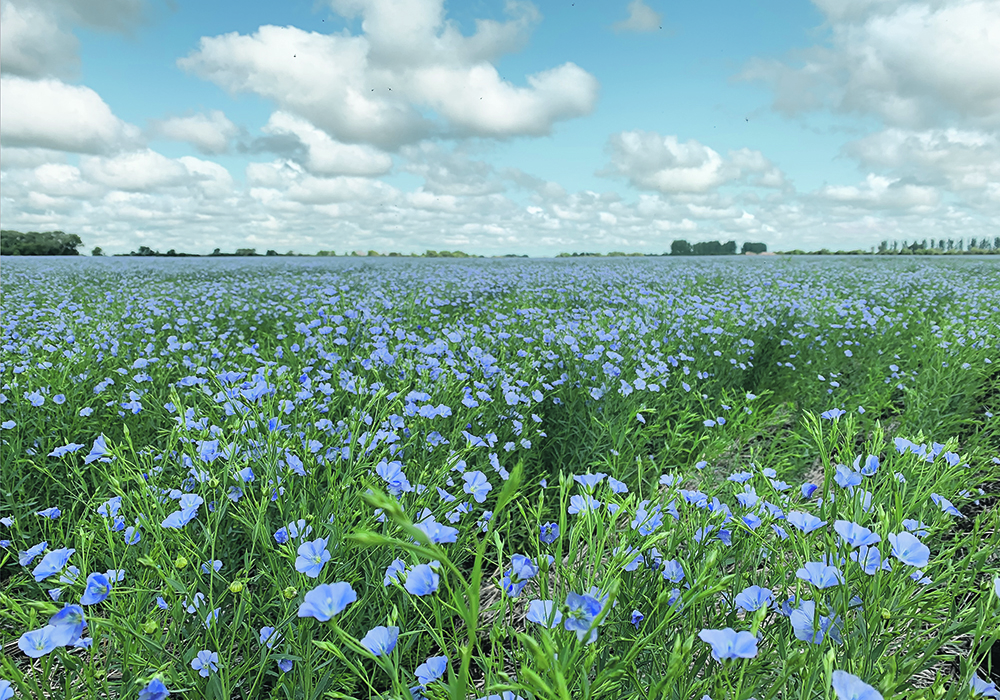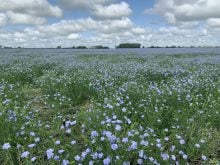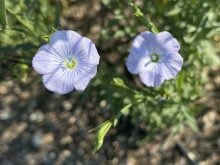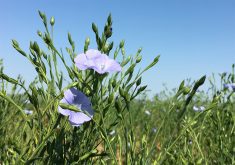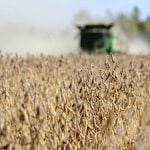EU has set limits on cadmium levels, prompting efforts in Saskatchewan to lower presence of naturally occurring metal
The Saskatchewan Flax Development Commission and Agriculture-Applied Research Management are searching for ways to lower cadmium levels in flax after the European Union set a cadmium limit of 0.5 mg/kg in flaxseed imports.
Four research farm sites have been testing agronomic methods to find a solution.
South East Research Farm in Redvers, Sask., is one of the four sites, along with facilities in Scott, Indian Head and Yorkton.
Cadmium is a metal in soil and water that flax will infuse in the seed, which data has linked to multiple types of cancer, osteoporosis and kidney/liver diseases, according to an International Journal of Environmental Research and Public Health Review article titled The Effects of Cadmium Toxicity.
Read Also

Why feds imposed EV tariffs
Moe and Kinew have a fight on their hands when it comes to eliminating the EV tariff. Canada has to worry about pissing off the U.S. and Mexico and hundreds of thousands of auto workers.
“The trials are important because we need to find solutions for cadmium in flax because it likes to uptake cadmium naturally. It’s in our soils,” said SaskFlax executive director Wayne Thompson.
“We simply need to reduce the cadmium uptake in flax to maintain our markets, and we’re working on that from two sides right now.”
The EU’s 0.5 mg per kg, or 500 mg per tonne, limit was set Aug. 31, 2021. Canada exported 128,000 tonnes of flaxseed to the EU last year.
Thompson said SaskFlax is waiting to see how EU buyers react to the new regulations, and whether the rules will affect how much flax they buy from Canada.
“There’s a lot of factors impacting our Canadian flax export markets around the world.”
In a SaskFlax newsletter, Thompson wrote that the “long-term goal is to have new flax varieties that reduce their uptake of cadmium. In the short term, we are looking for agronomic solutions.”
Thompson said there are currently no flax varieties designed for reduced cadmium uptake.
The four research farms are implementing zinc and gypsum into the soil in an attempt to reduce cadmium accumulation.
Ishita Patel is a research agronomist at South East Research Farms and one of the leads on the project.
“It’s going to be a pretty big issue for farmers, maybe even this year,” said Patel.
“The (Crop Development Centre) is looking to breed varieties that don’t accumulate much cadmium, but in the interim, we need solutions now.”
Canadian soil regularly tests for high cadmium levels. Researchers hope that by adding zinc and gypsum, the flax will uptake that, rather than the cadmium.
Some studies have been conducted showing promising results of zinc not only in flaxseed, but in wheat as well.
“The results revealed a competitive interaction between Cd2+ (cadmium) and Zn2+ (zinc), confirming that Cd2+ and Zn2+ share a common transport system at the root cell plasma membrane in both bread and durum wheat,” according to the research article, Transport interactions between cadmium and zinc in roots of bread and durum wheat seedlings, published in Physiologia Plantarum.
The belief is that flax will behave in a similar way. The Journal of the Science of Food and Agriculture published a 1997 article showing results of flax field studies that showed the “application of Zn (zinc), as zinc sulphate, generally decreased Cd concentration, but had little effect on Cd accumulation in flaxseed. Concentration of Cd in flaxseed decreased as seed concentration of Zn increased.”
The use of more traditional fertilizers may have an adverse effect because the “application of P (phosphorus), as monoammonium phosphate, increased Cd concentration and accumulation and decreased Zn concentration in flaxseed.”
Soil samples were taken prior to the Redvers trials and the highest cadmium accumulating flaxseed variety was used in the test. Patel also said they tested the fertilizer used to see if it was a source of cadmium.
Results won’t be known until the start of the next year.
“After harvest, we’re going to be sending the flaxseed to a laboratory for analysis to figure out how much cadmium is in there,” said Patel.
Thompson said some flax is definitely showing it will test under the EU’s 0.5 mg per kg limit.
The research is funded by Saskatchewan Ministry of Agriculture’s Ag Demonstration of Practices and Technologies (ADOPT) program.

